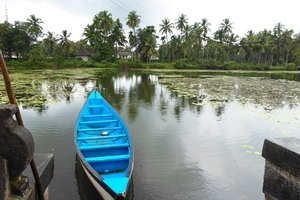Science
Community Stigma and the Challenges of Conducting Research Abroad

The experience of disease is not limited to the effects any bacteria, virus, or parasite has on the body. The way in which communities interact with diseased bodies impacts the experience of the disease. Often, the greatest burden comes from how diseased bodies are conceptualized within society. Diseased bodies are often ostracized from social spaces and barred from work. Contact with the diseased bodies can even change the standing of family and friends within the community. Social signification of disease is not intrinsically tied to the disease itself.
In global health, a paradigm transition is beginning to take shape. Historically, global health interventions have focused on diseases with high rates of mortality. The majority of international aid centers on HIV/AIDS, tuberculosis, and malaria. Great strides have been made towards treating and preventing these diseases. Global health focus now turns to diseases with high rates of morbidity-diseases that impair functioning of an individual for an extended period without resulting in death. The stigma associated with these diseases often changes how they are treated. Primarily, this category is composed of non-communicable diseases.
The Neglected Tropical Diseases (NTDs) present an interesting intersection of these two periods of global health. NTDs are a group of diverse, infectious pathogens which disproportionately impact low and middle countries and result in high instances of morbidity. NTDs were often overlooked for global health funding and research in favor of the higher mortality diseases. The NTDs now provide opportunities for research on such diseases which result in high-impact social and community impairments.
While studying abroad at Manipal University in Karnataka, India, I had the opportunity to conduct my own independent research project on NTDs and community stigma. The two diseases which were the focus of my research were leprosy and lymphatic filariasis. Leprosy, caused by the bacterium Mycobacterium leprae, is known for the characteristic skin lesions and deformed limbs that accompany its infection. Leprosy has traditionally been at the forefront of the study of disease stigma due to the history of discrimination against people infected with leprosy. Leper colonies-the separation of geographic space which could be inhabited by these diseased bodies-are a good example of the burden that stigma of disease can add to its physical effects. Leprosy is not a global health problem, however, as it has been eradicated in most areas of the world. India was declared free of leprosy in 2005 with a national prevalence of 0.8 cases per 10,000 in the population.
Lymphatic filariasis, caused by parasites Wucheria bancrofti and Brugia malayi, is more commonly known for its tertiary symptom of elephantiasis. Elephantiasis is the extreme swelling of the limbs or scrotum accompanied by the hardening of the skin-leading to the affected parts of the body to resemble an elephant. Lymphatic filariasis is endemic in India with 590 million cases reported in 2007. I compared perceived community stigma of these two diseases for two reasons. Firstly, both diseases cause visible deformity that may affect how the community interacts with the infected persons. Secondly, globally, leprosy serves as an example of how perceived stigma can be overcome to successfully treat the disease. The current burden of lymphatic filariasis calls for new innovations in interventions to reduce and prevent its spread.
For my research, I spent six weeks visiting rural clinics run by the Department of Community Medicine in the area surrounding the university. I worked with a translator to administer a thirty-question survey that resulted in a perceived stigma score for both leprosy and lymphatic filariasis. The survey contained questions such as "would you marry a person with [disease]?" and "would you feel comfortable buying food from a person with [disease]?". At the end of six weeks, 102 community members had been surveyed. After statistical analysis, I determined the mean stigma score for leprosy was significantly higher than the mean stigma score of lymphatic filariasis (p-value >0.001). This result is compelling because it indicated that the negative perception of a disease can persist past the presence of the actual disease. Although lymphatic filariasis has a bigger impact on the community, leprosy was still considered more threatening. The burden of having leprosy remains in the community despite its low prevalence.
I am fortunate to have had the opportunity to conduct a short research project on the interactions between disease stigma and the disease itself. The skills I learned through this experience will stay with me as I move forward throughout my career. The biggest lessons, however, revolve around the nature of global health research. Diseases cannot be separated from the environments in which they exist. As this paradigm shift in global health continues to take place, research must also begin to reflect social determinants' place in the experience of disease.